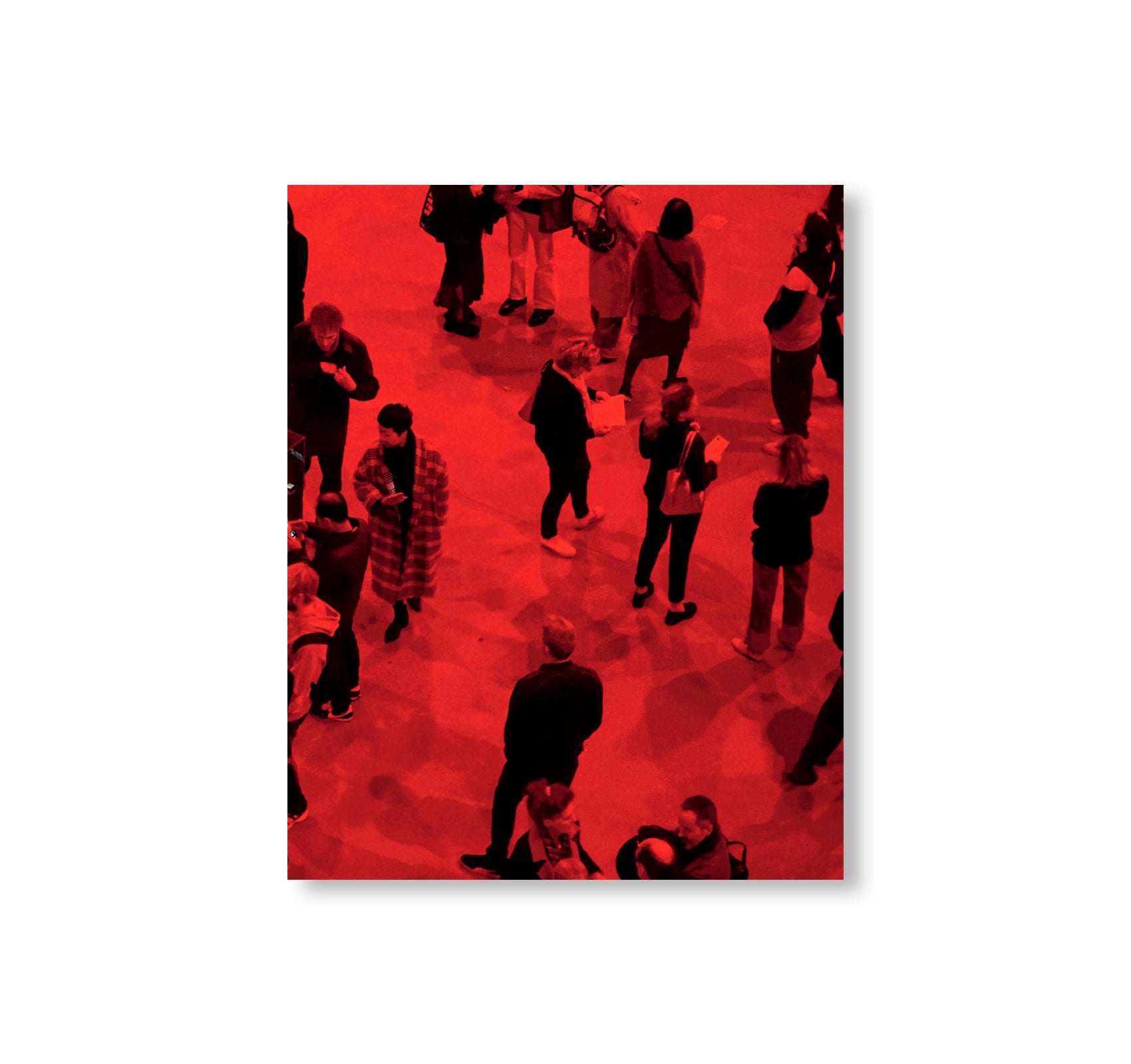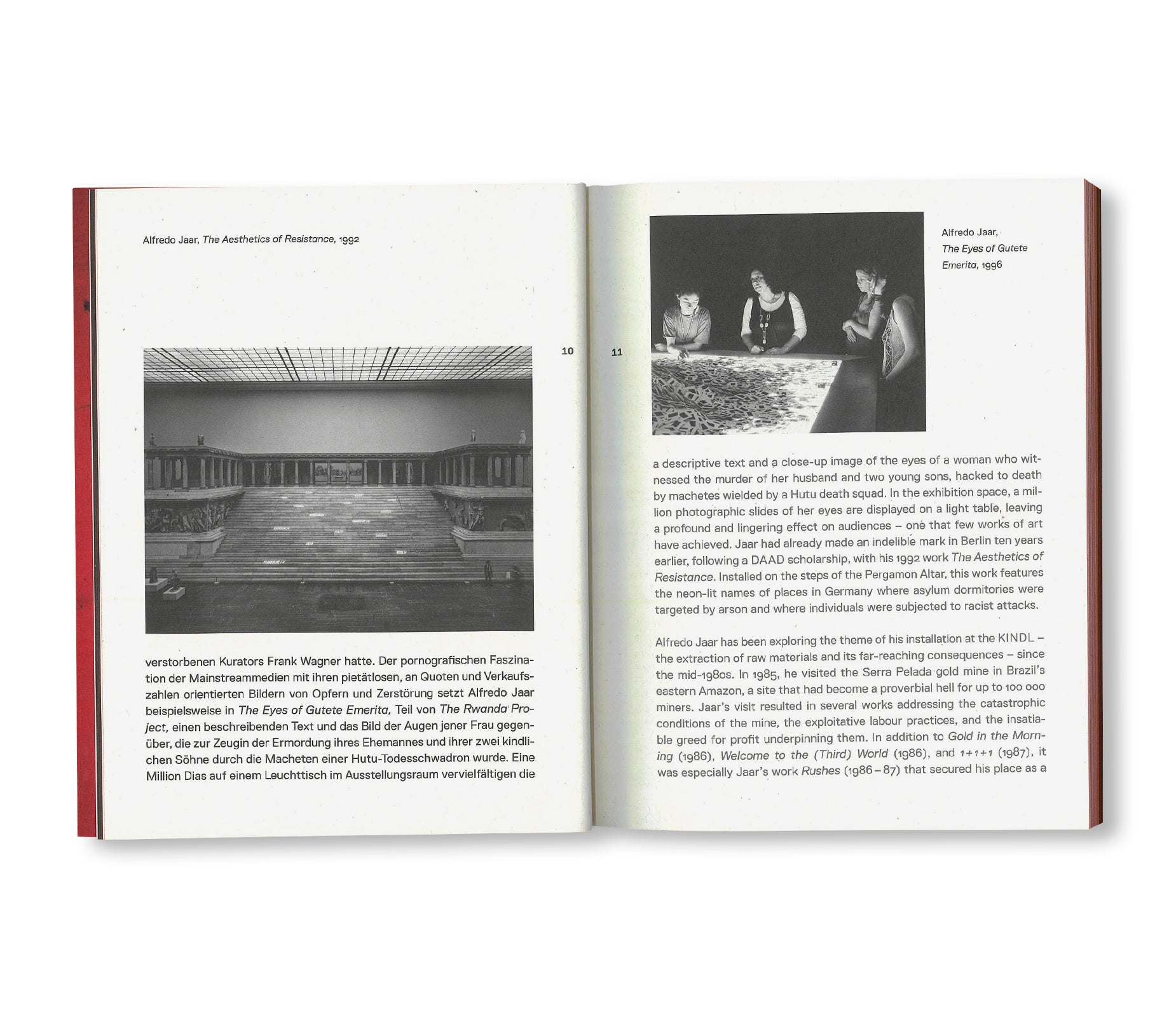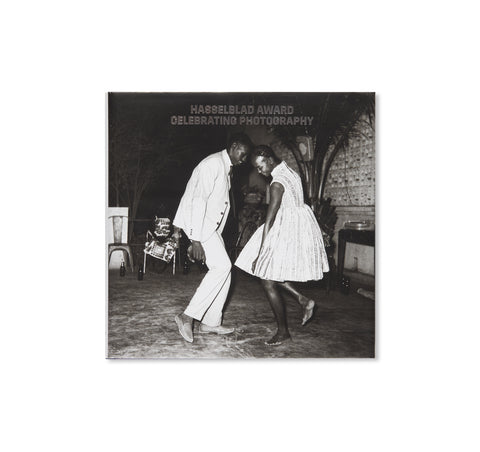THE END OF THE WORLD by Alfredo Jaar
ニューヨークを拠点に活動するチリ人アーティストで建築家、映像作家、アルフレド・ジャー(Alfredo Jaar)の作品集。2024年9月から2025年6月にかけてベルリンの「KINDL – Centre for Contemporary Art」で開催した展覧会に伴い刊行された。
1956年にサンティアゴ・デ・チリに生まれた作者は、アーティスト、建築家、そして映画作家として幅広く活躍する。40年以上にわたり、複雑な社会的・政治的問題に加え、表象の限界と倫理に専心してきた。グローバル・ノースによるグローバル・サウスでの資源搾取に伴う経済的・社会的不均衡や、不平等な力関係、メディア操作が、作者の探求的な研究や介入、そして写真・映画・インスタレーションといったメディアを横断する作品群を促してきた。
本書は、人文地理学者かつ政治地質学者であるアダム・ボベット(Adam Bobbette)の手助けを受けた複数年にわたる研究から生まれた作品であり、国際紛争において中心的な要素であり、かつますます顕著になっている資源をめぐる争いに焦点を当てた1冊となっている。収録されるサイトスペシフィック作品は、4 × 4 × 4センチメートルの立方体で、コバルト、レアアース、銅、スズ、ニッケル、リチウム、マンガン、コルタン、ゲルマニウム、プラチナといった資源で構成されている。これら10種類の戦略的金属は、デジタル技術や電気自動車、ハイテク応用、記憶媒体の分野で極めて重要である。需要が着実に増加する中、その採掘は深刻な人権侵害と環境破壊を伴う。作者は、地球を揺るがすこうした対立構造を鋭く観察する。アダム・ボベットとナンシー・プリンセントール(Nancy Princenthal)によるエッセイに加え、カトリン・ベッカー(Kathrin Becker)による序文を収録。
Alfredo Jaar (b. Santiago de Chile, 1956; lives and works in New York) is an artist, architect, and filmmaker. For over four decades, he has dedicated himself to complex social and political issues and the limitations and ethics of representation. Economic and social imbalances in connection with the exploitation of resources in the Global South by the Global North, unequal power relations, and media manipulation prompt Jaar’s probing research, interventions, and works spanning the media of photography, film, and installation.
In The End of the World, which grew out of a multi-year research project assisted by the human geographer and political geologist Adam Bobbette, Jaar shines a spotlight on the struggle for resources, which is a central and ever more salient factor in international conflicts. The site-specific work, a cube measuring 4 × 4 × 4 centimeters, is composed of several such resources: cobalt, rare earths, copper, tin, nickel, lithium, manganese, coltan, germanium, and platinum. These ten strategic metals are of vital importance in the fields of digital technology and electromobility, for high-tech applications and storage media. As demand for them has grown steadily, their extraction has been accompanied by massive human rights violations and environmental destruction. Jaar astutely observes these lines of conflict that convulse our planet. His artistic research is complemented by essays by Adam Bobbette and Nancy Princenthal and an introduction by Kathrin Becker.













